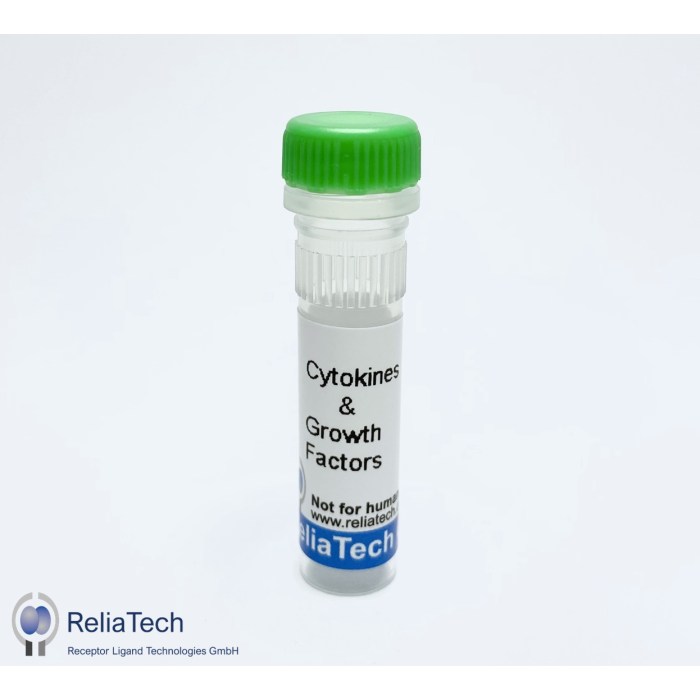Description / human GDNF (Animal Free) protein
GDNF is a disulfide-linked, homodimeric neurotrophic factor structurally related to Artemin, Neurturin and Persephin. These proteins belong to the cysteine-knot superfamily of growth factors that assume stable dimeric protein structures. GDNF signals through a multicomponent receptor system, composed of a RET and one of the four GFRα (α1-α4) receptors. GDNF specifically promotes dopamine uptake and survival, and morphological differentiation of midbrain neurons. Using a Parkinson’s disease mouse model, GDNF has been shown to improve conditions such as bradykinesia, rigidity, and postural instability. The functional human GDNF ligand is a disulfide-linked homodimer consisting of two 15 kDa polypeptide chains called monomers. Each monomer contains seven conserved cysteine residues, including Cys-101, which is used for inter-chain disulfide bridging, and others that are involved in the intramolecular ring formation known as the cysteine-knot configuration. The calculated molecular weight of Recombinant Human GDNF is 30.4 kDa.
More Information
| Size | 2 µg |
|---|---|
| Source | E. coli |
| Biological Activity | Determined by a cell proliferation assay using SH-SY5Y cells. The expected ED50 for this effect is 1.0-10.0 ng/ml. |
| Purity Confirmation | ≥ 98% by SDS-PAGE gel and HPLC analyses. |
| Length [aa] | 135 |
| Molecular Weight | 15 kDa |
| Species Reactivity | Human, Monkey, Mouse |
| Formulation | lyophilized |
| Protein Sequence | MSPDKQMAVL PRRERNRQAA AANPENSRGK GRRGQRGKNR GCVLTAIHLN VTDLGLGYET KEELIFRYCS GSCDAAETTY DKILKNLSRN RRLVSDKVGQ ACCRPIAFDD DLSFLDDNLV YHILRKHSAK RCGCI |
| Synonyms | GDNF; ATF1; ATF2; HSCR3; HFB1-GDNF |
| Uniprot ID | P39905 |
| Protein RefSeq | NP_000505.1 |
| mRNA RefSeq | NM_000514 |
| Pluripotent stem cells-derived organoids | Cortical |

